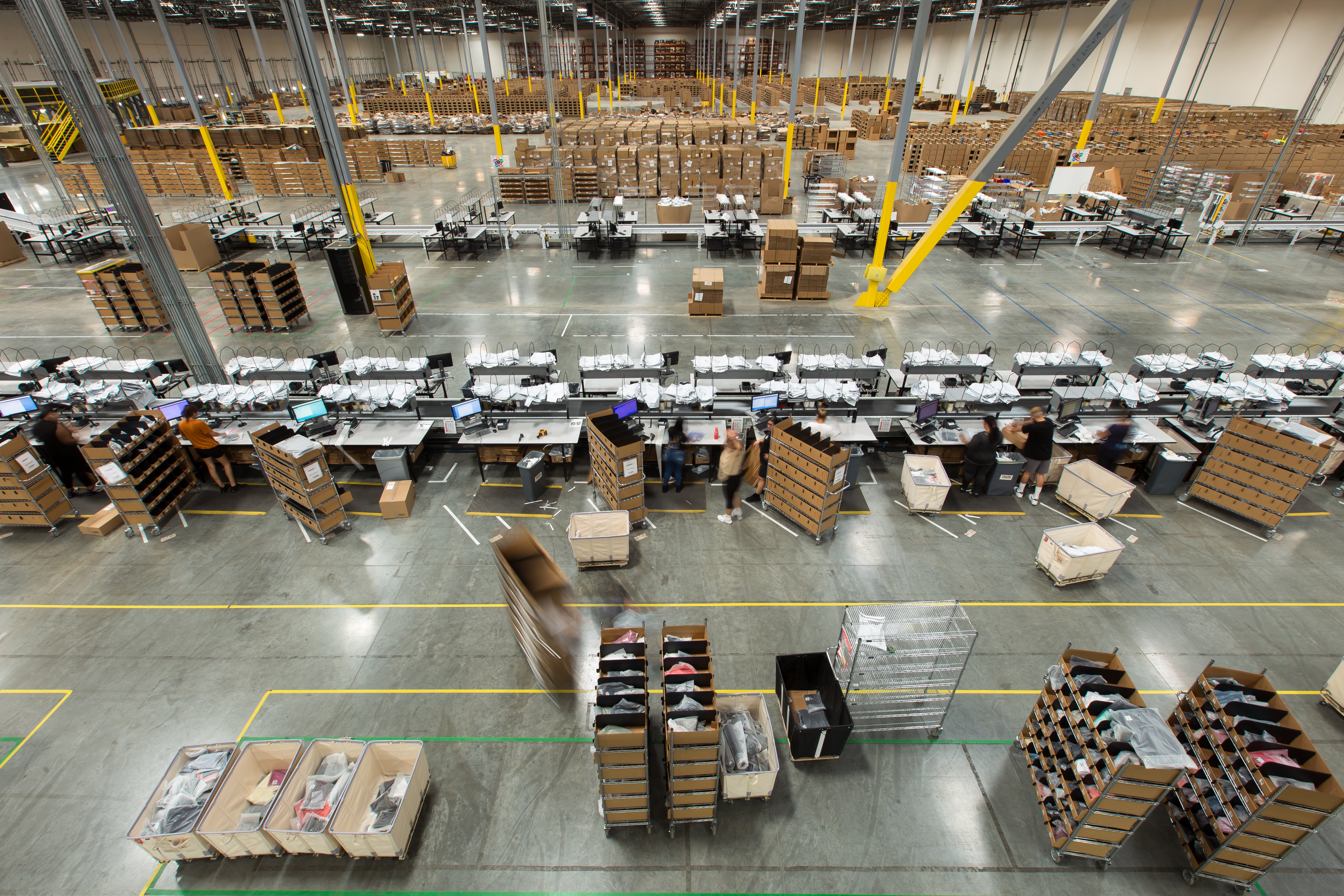Labor generally makes up 60–65% of the total cost of warehouse fulfillment (not including shipping). While hourly labor rates have increased 10% to 15% in the past five years, overall DC productivity has remained flat—so the cost per unit worked has increased. High turnover (15–25% or more in many distribution centers) adds even more costs. With most businesses struggling in the current economy, it’s imperative to get more from the resources you have. Selecting, training, and retaining good employees is one key to controlling rising costs in the warehouse.
The following is a list of strategies that will help you manage your warehouse labor more effectively while also controlling your warehouse expenses.
Hire Right
The first step in controlling labor costs is to spend time and effort in hiring the best employees possible. When you consider what it costs to find, interview, and hire warehouse workers, it is easy to understand why this function has to be well managed and cost effective.
In addition to the normal steps taken in the hiring process, consider showing the perspective employee the actual job that will be performed. If possible, let them try out the job for a short period, in a safe controlled environment. In addition, having them talk to an employee currently performing the job might provide an insight into what the job is really like.
One key is to identify the characteristics of a successful employee, and look for those attributes in the prospective new hire. Many pre-employment testing programs identify these successful characteristics and test for them in those potential employees being interviewed. It requires some input by management to identify expectations and goals to be used to gauge high performance employees, but this should be in place anyway. If you cannot tell your employees what it takes to succeed, how can you expect to find employees who will be successful?
I would suggest that you give prospective employees some limited instruction and let them try the work and find tests that assess people’s ability to do the work and/or fit into your culture.
Train them
It never ceases to amaze me when we see warehouses spend significant time and money recruiting and hiring employees only to "throw them to the wolves" with inadequate training and then wonder why the turnover rate is so high. There is no single answer as to how much training time should be allocated to new hires. It varies with the position being filled and the complexity of the job. But even the simplest of jobs require some type of training. The initial training period is probably the most important in determining if the new hire will succeed. Learning about the specific job is important, but also learning about the company and the work culture is critical to long term employment. Using a seasoned employee as a “Buddy” can help explain to the new employee what is really required.
During the training period, it is important to quantify the expected output and results for the job. The old adage that "we measure what we value" goes a long way to defining the real work culture. The training period should be the opportunity for the new hire to learn what it takes to get ahead.

Many warehouses have not documented each job function to be used as a training aid. If you haven’t done this, you may be surprised at the side benefits gained by going through the exercise of documenting your warehouse processes. Developing training manuals can not only make the training time more effective, but can also lead to process reviews and changes that can reduce overall warehouse costs.
Set Standards
As mentioned earlier, it is critical for employees to know what is expected of them. They will discover how to succeed in the work culture by working there, but, you need to provide quantitative measures to give employees an understanding of what is expected of them in terms of productivity or output. Set productivity goals both by department and by individual. These standards should be realistic and based on the way you do business, not someone else’s standards. Measuring yourself against yourself over a time period is the best path to improving productivity. The old saying that "you can’t improve something you don’t measure" is a true one.
We recommend that you establish understandable and reasonable productivity goals and objectives along with overall standards of expected performance. Management that has the mantra of "Focus – Clarity – Accountability" generally proves to be more effective than those that don’t.
Give Feedback to Employees
Employees want to feel they are part of the bigger company picture, and deserve accurate feedback about their production. One of our clients displays monthly graphs for the past year in their logistics management offices, showing actual against plan metrics such as total error rate, cost of a transaction, reported savings, etc. In their DC, current production is displayed on terminals and message boards, and they not only acknowledge department records for various departmental functions, but individual record holders for such activities as picking or packing. Providing targets works to raise productivity.
This type of feedback is invaluable in helping employees determine how they are doing. Most people want to do a good job and only ask that they receive feedback as to how they are performing. It is also human nature to want to meet or exceed expectations. As such, we have seen warehouses increase overall productivity by 10% by simply posting results and providing meaningful feedback to their employees. Posting results at the company, warehouse, function, or individual level can be based on whether the required information is readily available and credible. Match the level of measurement to your ability to report accurate and timely information.
Provide Incentives
More and more companies are using incentives to increase production. A large multi-brand catalog client we work with told us, “Incentives require engineered standards to be fair and to keep productivity increasing. If they are not continually evaluated, chances are that you’ll end up paying an incentive for production that you have gained over time.” Many companies are using non-financial incentives to recognize high productivity.

There are obviously two schools of thought concerning incentives. If you decide to implement some type of financial incentives, make sure you allocate enough management time to control the process to make sure it is not costing more that the benefits gained. Consider non-financial programs as a less risky method of providing incentives. Also, look at group or company incentive programs as a way to get overall improvements without the time and expense of providing individual employee measurements.
Track Employee Turnover
It is important to know how well you are doing in your hiring and retention efforts. Set up a system to track and calculate employee turnover monthly. Develop a turnover report showing the number who were hired; started training; left while in training or once they graduated; were long-term employees or new hires. Establish an exit interview process to learn more about why people leave. Calculate the cost of recruiting, training and losing an employee. Communicate reasons and costs to management, and establish a plan of action for change.
As a general rule, placing people in positions where they have a good chance of success will lower turnover. Many times we want to move the most productive employee to another more challenging position as a reward. Make sure it is what the employee really wants. There is nothing wrong with wanting to stay in a current job where they are very productive. Resist the temptation to move them up the ladder if they do not want to go. Find ways to reward them for staying where they are happy and productive.
One other aspect of reducing employee turnover is to make sure you have the right supervisors in place. Their primary job is to meet business goals through people management. If you have a person in that position who cannot effectively relate to employees as a way to meet goals, you will have a very tough time succeeding.
As managers, you can ask some of the following questions as a gauge of how well you are providing management and supervision functions to your employees. Everyone needs to look at their leadership and managerial capabilities.
1. What more can you do as a manager?
2. What motivates staff members to excel beyond normal expected performance?
3. Have you delegated and empowered your staff to achieve success?
4. Are your team members the most capable and talented people you can afford to hire?
5. Are any of the staff too weak to enable you to achieve the success you were hired to achieve?
6. How effectively and objectively do you evaluate the performance and development of your team members?
In Summary
One of our multichannel clients summed it up best: “Managing labor is a game of reducing a few pennies here and there on an organized basis to reduce the cost per order overall. At the same time, we need to take into account how we can motivate and increase productivity fairly to achieve our company’s goals.”









SHARE